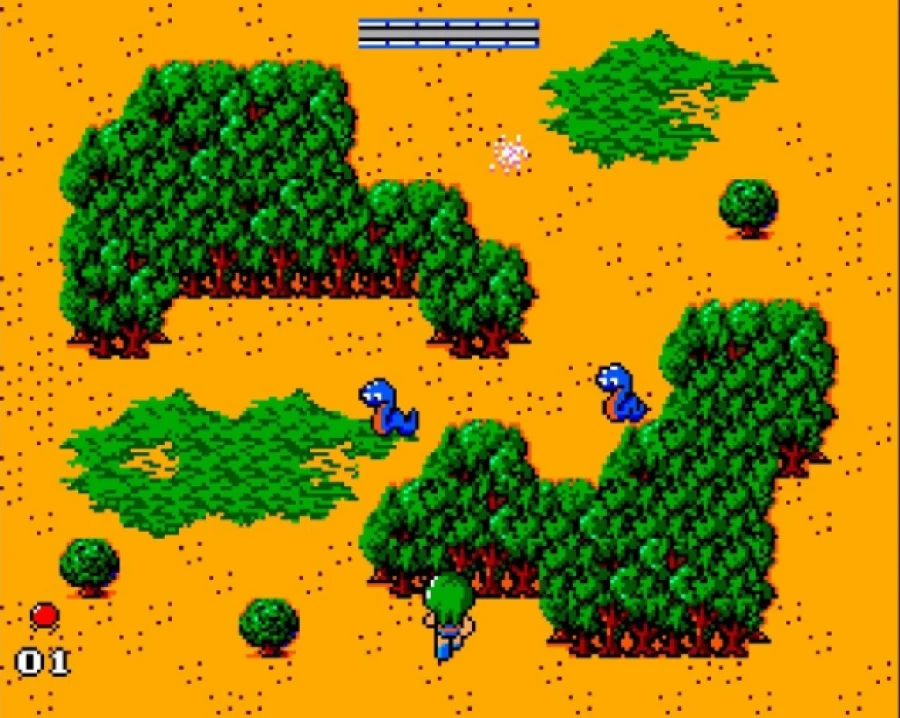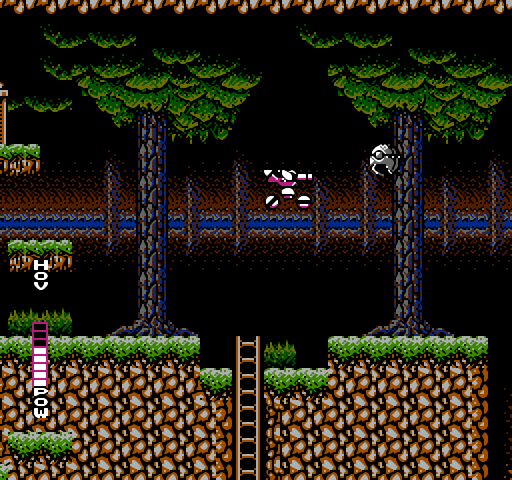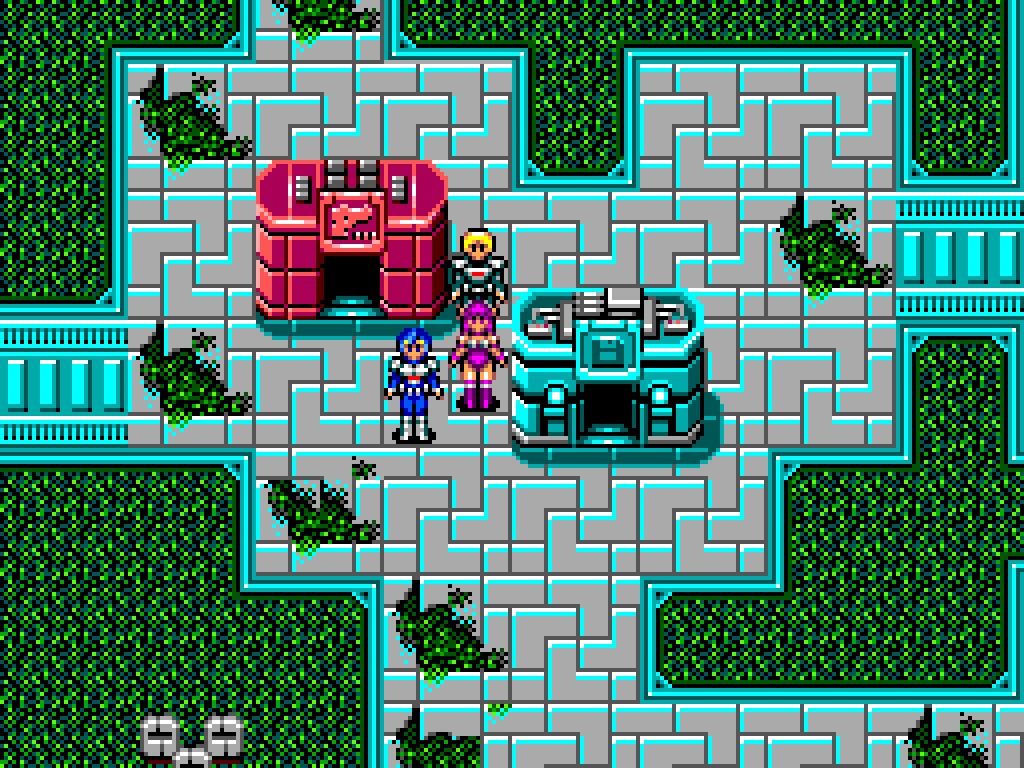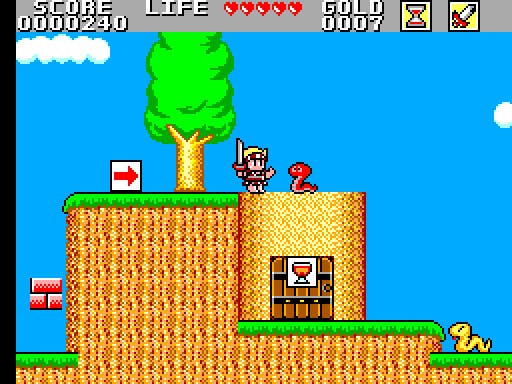

8. (Tie) Bionic Commando (NES)
Bionic Commando is a very unique platformer from Capcom in that your character can run and gun, but can’t jump. Instead, all platforming is done via a bionic arm that acts as a grappling hook. This unique twist on the standard platformer combined with excellent design and challenging bosses would be enough reason to praise Bionic Commando, but the game also features branching paths, meaning that you can experience the game differently from one play to the next. The cherry on top of this game – you get to kill Hitler. It’s truly a good time.

8. (Tie) Contra (NES)
Contra is the quintessential run and gun game. Filled to the brim with enemies, bullets, aliens, etc… Contra simply never stops attacking you, and it’s truly a joy to experience. Offering a variety of weapons, level designs, and enemies, Contra never ceases to be both exciting and frustrating. That said, it never feels unfair, which is, to me, a sign of a very well designed game. A special shout out here to those of you that have bested this title without using the Konami Code. I certainly have not.

8. (Tie) Golvellius: Valley of Doom (Master System)
Intentionally or not, Golvellius was the Master System’s answer to The Legend of Zelda. Utilizing an overhead view, your hero navigates around the overworld one screen at a time, attacking enemies with a sword. It’s quite Zelda-esque. Once you begin investigating the multiple caves of the overworld, things change up a bit. In some dungeons, you are shifted to a side-scrolling view and the games becomes something of a platformer. Other dungeons become a play on overhead, auto-scrolling shooters. Golvellius has a few issues to be sure, but it is still a solid game well worth visiting.

7. RC Pro-Am (NES)
You race against the computer over a variety of tracks, picking up or buying power-ups after each race. I honestly don’t know what else to say here. It’s possibly the most simplistic game style in the world, yet this game by Rare is a ton of fun. I can’t describe why I love this game. Maybe it just has to be played to be understood. Whatever it is, it deserves to be on this list.

6. Blaster Master (NES)
Innovation seems to be a theme on this list, and Blaster Master is no exception. The world of Blaster Master is explored in a tank named Sophia the 3rd in a side-scrolling fashion. The world is broken into sections that can’t be fully explored, or accessed, until you gain a power-up, very much like Metroid. At certain points, you have to exit Sophia and enter dungeons. These sections are played from an overhead perspective, and are where the bosses in this game are hidden. This could have been a disaster, but thanks to some excellent design work by a development team of around five people, Blaster Master is still held in high regard today.

5. Phantasy Star (Master System)
Phantasy Star is Sega’s answer to Final Fantasy, and it is a strong answer (I’ll argue that Phantasy Star is better than the original Final Fantasy). Playing much like most RPG’s of the era, you explore an overworld, battle in random, turn-based encounters, and level up. Phantasy Star is original in that dungeons are explored in a first person mode, and practically require the drawing of a map to navigate. This may seem cumbersome to some, but for the time, it was hardly unusual, and, for me, holds some charm even today.

4. Ys I: Ancient Ys Vanished (Master System)
The first game in the long-running Ys series, Ys I, like many games on this list, was a very different beast than most games. The game is viewed similarly to Zelda, but your hero, Adol Christin, doesn’t attack in the traditional manner. Instead of attacking with the push of a button, you run into your enemies a bit off-center to do damage. This can be frustrating at first, but when it finally clicks, it almost has a rhythm to it, and becomes extremely fun. Ys I also has killer music as well as killer challenge, though not cheap challenge. Definitely one of the best of 1988.

3. Wonder Boy in Monster Land (Master System)
Abandoning the rather barebones approach of the original Wonder Boy (no offense meant, I love Wonder Boy and Adventure Island), Monster Land has many RPG elements. You, as Wonder Boy, explore multiple levels, purchasing stronger equipment as you go, as well as finding or earning items that give you additional powers. Making such drastic changes from one game to the next is a risky move, but in this instance it worked better than I can imagine anyone ever expected. Wonder Boy has kept this style of play, and is still a very relevant franchise today via remakes and sequels.

2. Super Mario Brothers 2 (NES)
At this point, we all know the story. Nintendo of Japan thought American gamers were terrible, so instead of getting the true Mario 2, we got Doki Doki Panic with a Mario facelift. Frankly, it doesn’t matter to me. I think this was a positive development as I don’t care for Japanese Mario 2. Super Mario Brothers 2 (US) was quite different from its namesake. You pick up enemies instead of jumping on them. You attack by throwing vegetables. Four Mario characters are playable, each with strengths and weaknesses. Bowser is no where to be found. For as different as it was, it was still a great game with great design, nice graphics, and interesting worlds. It was even released in Japan as Super Mario Brothers USA. For a title that was only made as a compromise, it has certainly cemented itself as a classic NES title, and is my best of 1988.

1. Zelda II: The Adventure of Link (NES)
Much like Super Mario Brothers 2 deviated from the original (though for vastly different reasons), Nintendo chose to make Zelda II differ from its predecessor. While a top down view was retained for the world map, all action takes place from a side-scrolling perspective. The difficulty of Zelda II was also ramped up, making it a true challenge in latter areas of the game. Finally, Zelda II removed all usable items such as bombs and the boomerang and added magic spells. Zelda II has long been considered a black sheep of the series, but I’ve always adored this title. It feels like a fuller game than the original, and the discovery of a second entire continent halfway through the game was joyful surprise in my original playthrough. This is a title that I played extensively in my childhood and continue to playthrough today. As a result, it’s my #1 game of 1988.